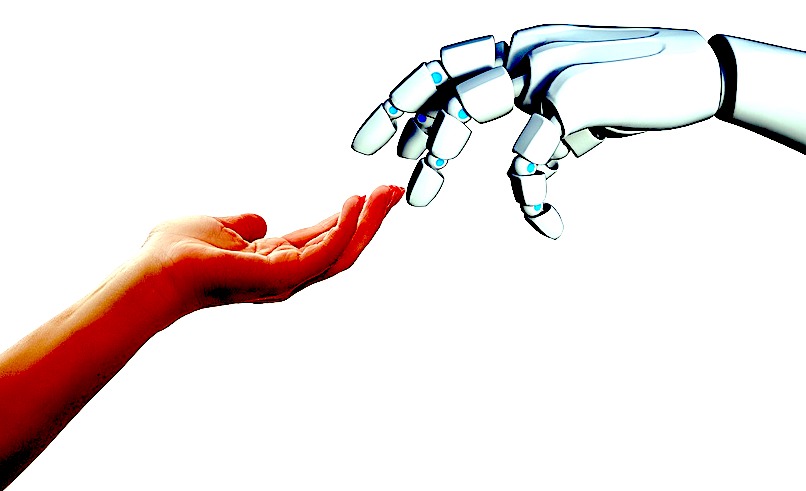 EMERGING TECH
EMERGING TECH
 EMERGING TECH
EMERGING TECH
 EMERGING TECH
EMERGING TECH
Artificial intelligence-driven automation is taking hold everywhere, though many people fear that this trend will put people out of jobs en masse.
How realistic is this worry? Bear in mind that many automation-related vendor announcements highlight a “human-in-the-loop” capability that bodes well for continued employment in the affected industries or professions.
Wikibon believes that “human-in-the-loop” architectures are here to stay and will remain the core of many enterprise automation initiatives. For example, most automated machine learning environments have core “’human in the loop” dependency that’s not likely to go away anytime soon.
As discussed in a recent piece by Bill Vorhies of Data Science Central, many next-generation ML automation tools blend algorithmic and manual processes in order to boost the accuracy of various tasks that no bot or human, no matter how expert, can handle as well unassisted. What he describes is the typical flow that Wikibon has found in many ML automation tools on the market:
More broadly, organizations are automating data cleansing, transformation, integration and curation to the hilt, freeing up data scientists to develop high-powered AI for disruptive business apps. As noted in this recent Information Management article, these business productivity advances are due to improvements in “automating aspects of the wrangling process, expediting data quality measures and making these functions both repeatable and easily shared with other users.”
Wikibon has seen these advances in our own coverage of the data management market. More data professionals are adopting an industrial-grade work discipline focused on repeatable pipelining of patterned tasks, such as ML-driven data integration and model training, within continuous DevOps workflows. There is no sign that this trend will throw data management professionals out of work because they will remain a critical player in closed-loop exception handing, quality assurance and other irreplaceable functions.
This is especially evident in information technology operations and infrastructure management, where ML helps IT administrators stay ahead of the rising tide of infrastructure data flowing in real time all hours of the day and night. Automating distillation of those data-driven insights enables IT infrastructure managers to oversee more root cause analysis, workload management, performance monitoring and other key operational tasks. Once again, many of these functions absolutely require expert humans to remain engaged to manage exceedingly complex tasks that will not be amenable to 100 percent automation.
Check out this webcast I recently did with Ryan Davis, a senior product marketing manager at ExtraHop Networks, in which he discusses using ML to augment an infrastructure management team’s productivity. Automating distillation of data-driven insights grows increasingly difficult as the scale and complexity of the infrastructure grows. ML is a key tool for in-the-loop technical managers to tap into the benefits of automation while scaling up their ability to do leverage their human expertise over expanding infrastructure, workloads and business applications.
Ryan’s colleague Matt Cauthorn recently spoke about the benefits of ML-driven IT infrastructure management automation on theCUBE at the RSA Conference in San Francisco:
Support our open free content by sharing and engaging with our content and community.
Where Technology Leaders Connect, Share Intelligence & Create Opportunities
SiliconANGLE Media is a recognized leader in digital media innovation serving innovative audiences and brands, bringing together cutting-edge technology, influential content, strategic insights and real-time audience engagement. As the parent company of SiliconANGLE, theCUBE Network, theCUBE Research, CUBE365, theCUBE AI and theCUBE SuperStudios — such as those established in Silicon Valley and the New York Stock Exchange (NYSE) — SiliconANGLE Media operates at the intersection of media, technology, and AI. .
Founded by tech visionaries John Furrier and Dave Vellante, SiliconANGLE Media has built a powerful ecosystem of industry-leading digital media brands, with a reach of 15+ million elite tech professionals. The company’s new, proprietary theCUBE AI Video cloud is breaking ground in audience interaction, leveraging theCUBEai.com neural network to help technology companies make data-driven decisions and stay at the forefront of industry conversations.